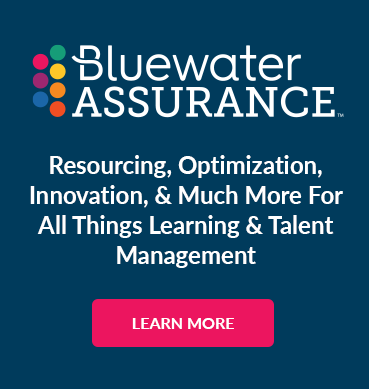Your Cornerstone System With No Governance: A House With No Foundation
by Tim Carlsson | December 11, 2017 10:17 PM | Shark Bites - Cornerstone Edition

Still, trying to figure out how to use all the capabilities of your Cornerstone solution? Are you a one-person band trying to do it all yourself, or are there too many cooks in your kitchen? Many Cornerstone clients struggle with the appropriate way to harness the power of their solution without getting distracted by all the options available to their organization. Creating a solid foundation with a robust governance approach can bring a semblance of structure to the many needs of your business owners, administrators, and learners using your solution.
Why is good governance important?
- Priorities – A good governance approach provides the structure you need to align your efforts with the biggest outcomes affecting your business, not just the squeakiest wheels in your organization.
- It’s not about the technology – We commonly discuss that the challenges our clients have are 80% process and 20% technology, not the other way around. Building clear policies, processes, and procedures clarify responsibilities and reduces confusion across the learning and talent management communities.
- Be viewed as the enabler, not the enforcer – Good governance gives your management team the ability to be viewed as a resource to get things done effectively and efficiently, not a team that is known for limiting access and getting in the way.
- Things Change; so, should your solution – Change is consistent: In your business, in the marketplace, and even with your Cornerstone quarterly releases. A solid governance approach provides the framework to support change. If you are not prepared for change, your solution will quickly lag behind the needs of the organization.
Where do I start?
The key to successful governance starts with a vision. How do you want to operate your learning and talent management solution? What do you want to accomplish with this approach? Too often organizations get trapped into thinking technology is the answer to their people's development needs. What we have learned at Bluewater is that technology is an enabler for people's development but it is not the answer. Your governance vision should focus on the outcomes of your business, describe what success looks like, and help define what your model will accomplish in the organization.
With your vision in place, focus on developing an operating model. This model should accommodate needs for consulting, management, and administration with your business units. What activities need to be managed in a centralized way? What activities should become standardized processes administered by local teams? Or, should the specific activities be completely managed and localized within your business team?
You’ll need to define and address several components of your operating model:
- Learning and Talent Leadership Committee – This group aligns the business needs of the team with your learning and talent management objectives. Your leadership committee typically meets quarterly to address the needs of the business and set the direction for operating the solution.
- Change Control Team– This team is responsible for aligning your policies and procedures with those changing needs. It’s your execution team. When changes are required, the team evaluates your policies and procedures against the reason for the change and the impact, and they determine the next steps required.
- Governance Policies & Process – Your policies establish the guidelines, and your processes define the responsibilities and activities which need to take place.
- Learning and Talent Organization– Know who all the relevant stakeholders are for your solution. This group includes learners, administrators, business teams, IT, etc.
Finally, you need to prioritize the policies you need to get in place. Some customers have over 30 policies in place; others can function and operate on fewer. Some guidelines for prioritization:
- What can the organization do of its own nature without a lot of direction?
- Where is there a lot of change that needs to be communicated and clarified?
- Where are there lots of interactions between teams with coordinating responsibilities?
Where do I go from here?
If you are operating your solution in a reactive mode, a little planning regarding governance can allow you to take a step back, prioritize your efforts, and put in place a structure that is going to adapt and adjust as your business changes. Slow down enough to make sure you:
- Define a vision for governance
- Build/Review your Operating model
- Prioritize your Policies to develop and execute
Interested in learning more about governance and the role it plays within your Learning & Talent Technology?
Feel free to reach out to us directly!
Search Our Blogs
Categories
- Ad Hoc
- ADMIN
- administration
- AI
- analytics
- anxiety
- Artificial intelligence
- automation
- BI
- blog
- Blueprint
- center of excellence
- Communication
- COVID-19
- Culture
- Custom Content
- customer service
- Data
- Employee Engagement
- Shark Bites - Cornerstone Edition
- Shark Bites - SumTotal Edition
- Shark Bites - Ultimate Edition
- The Future of Learning
- The Future of Talent Management
- User Experience
- UX
- wellbeing

